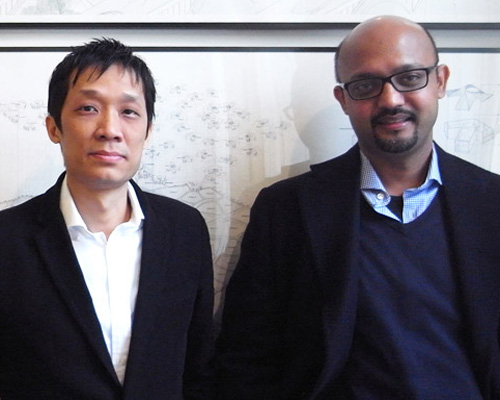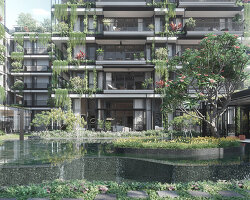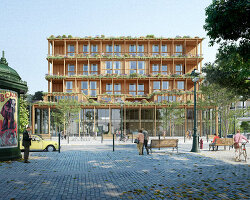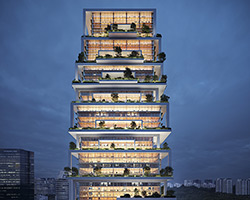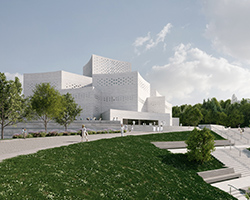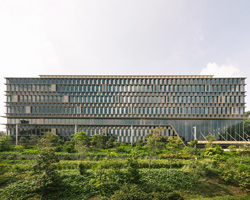serie architects interview with christopher lee and kapil gupta portrait © designboom
designboom met with christopher lee and kapil guptal of serie in london at their exhibition ‘working in series‘ at the architectural association on 20 november, 2010.
—
(c christopher / k kapil)
what is your favourite moment of the day? c: for me, it’s at night. everything is quiet and I settle down for some reading. I am working on my Ph.D so the night is dedicated to reading and writing. that, for me, is the best time. k: the morning. I get into the office an hour and a half before everyone else starts. it gives me that time to just sit and plan.
what kind of music do you listen to at the moment? k: I listen to a mix of indian classical. it’s good for architecture. (laughs) c: a lot of miles davis. recently, stacey kent but mainly jazz. there’s so much within jazz to listen to so whether it’s miles, dexter gordon, john coltrane — I move from one to the other. they are pretty much within the same genre. I wouldn’t make the claim that it is good for architecture but it’s something that I like.
do you ever listen to the radio? c: most of the time, actually. when we work in the office, the radio is pretty much on BBC. k: we all have internet radio on in our offices.
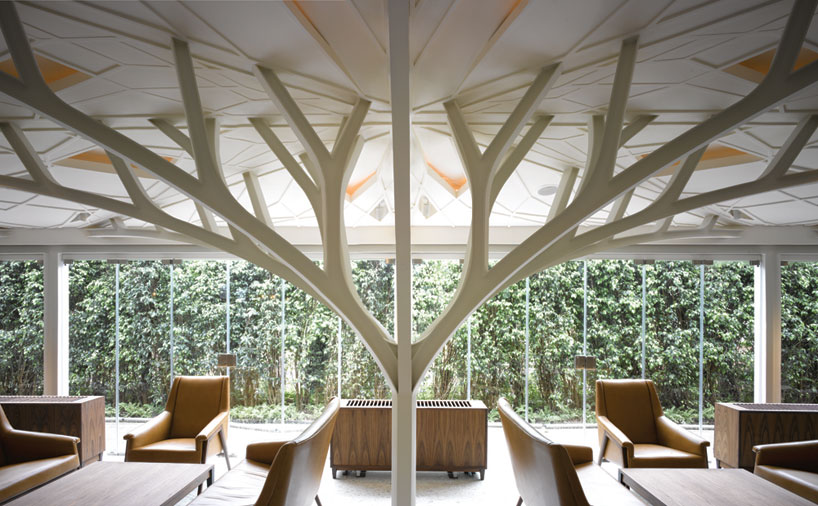 ‘the tote’ by serie architects in mumbai, india (2009) image courtesy serie architects photographer: fram petit
‘the tote’ by serie architects in mumbai, india (2009) image courtesy serie architects photographer: fram petit
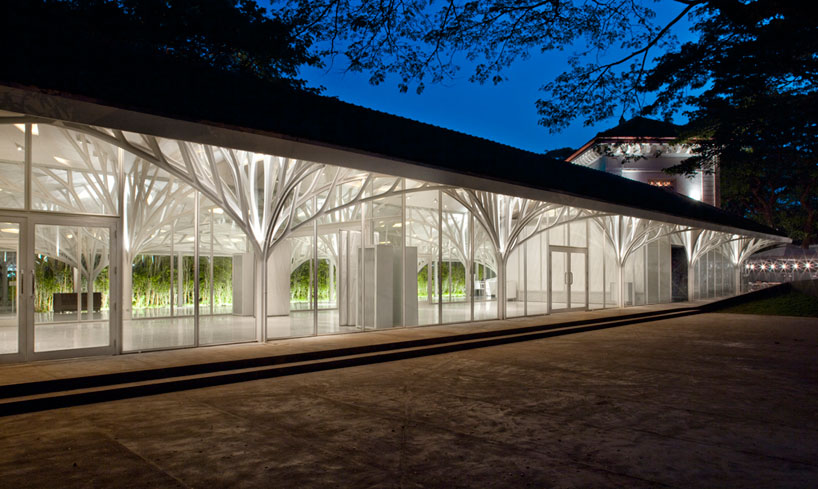 night view image courtesy serie architects photographer: fram petit for more images of the project, click here for our coverage of the project
night view image courtesy serie architects photographer: fram petit for more images of the project, click here for our coverage of the project
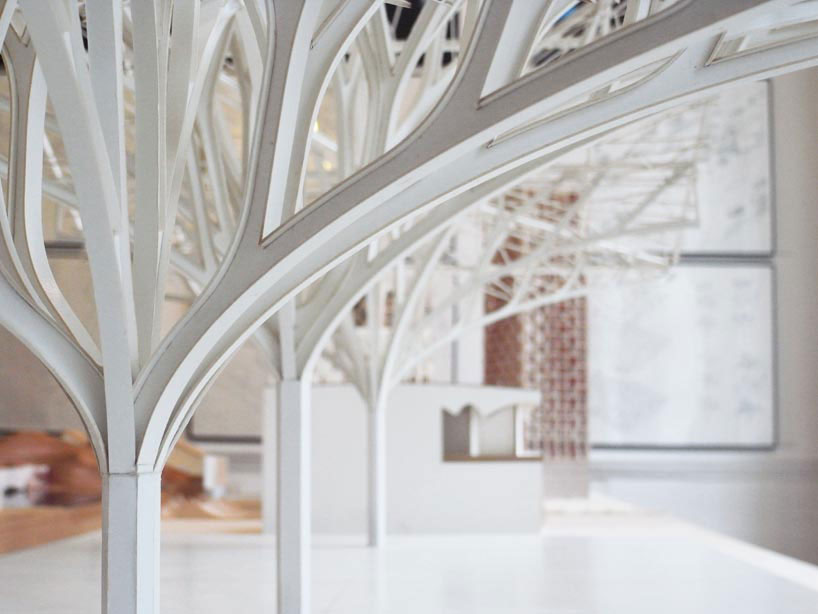 physical model of ‘the tote’ at the ‘working in series’ exhibition in london, england image © designboom to see more images from the show, click here
physical model of ‘the tote’ at the ‘working in series’ exhibition in london, england image © designboom to see more images from the show, click here
what books do you have on your bedside table at the moment? c: besides the pile of books for my Ph.D, I would say a good one is the one that I am about to finish: yiyun li, ‘a thousand years of good prayers.’ I like to read about writers who have been in exile, who are writing in a context that they were not born in or are not familiar with. yiyun li is a great example of that. k: I’m reading v.s. naipaul and some amitav ghosh as well.
do you ever read design or architecture magazines? c: ‘read’ may be an inaccurate word but we definitely — k: — browse. c: yeah, browse. if it has good articles, yes. k: it’s a way of just keeping up with what’s going on around the world.
where do you get your news from? mainly BBC. either BBC or the guardian, also the internet.
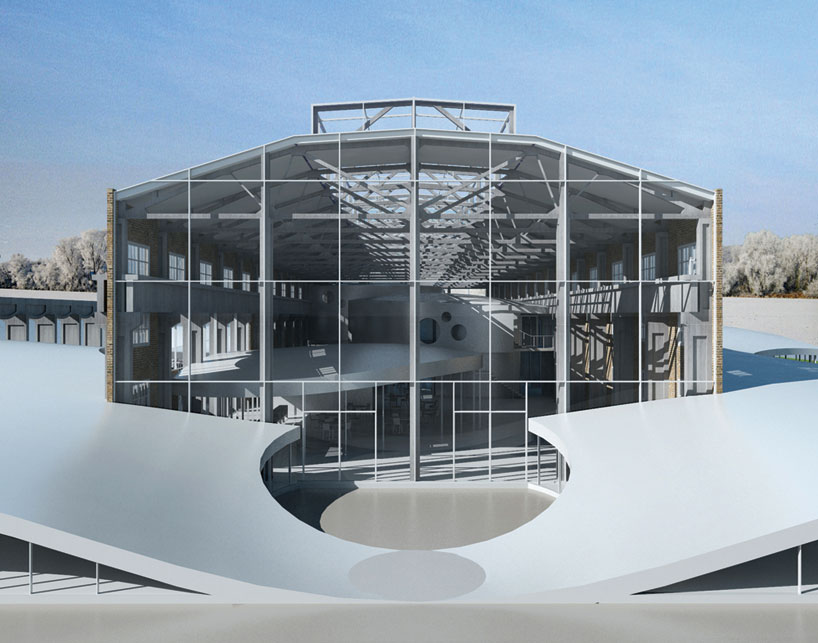 ‘hangzhou XTD factory h’ by serie architects in hangzhou, china (2011 – ) image courtesy serie architects
‘hangzhou XTD factory h’ by serie architects in hangzhou, china (2011 – ) image courtesy serie architects
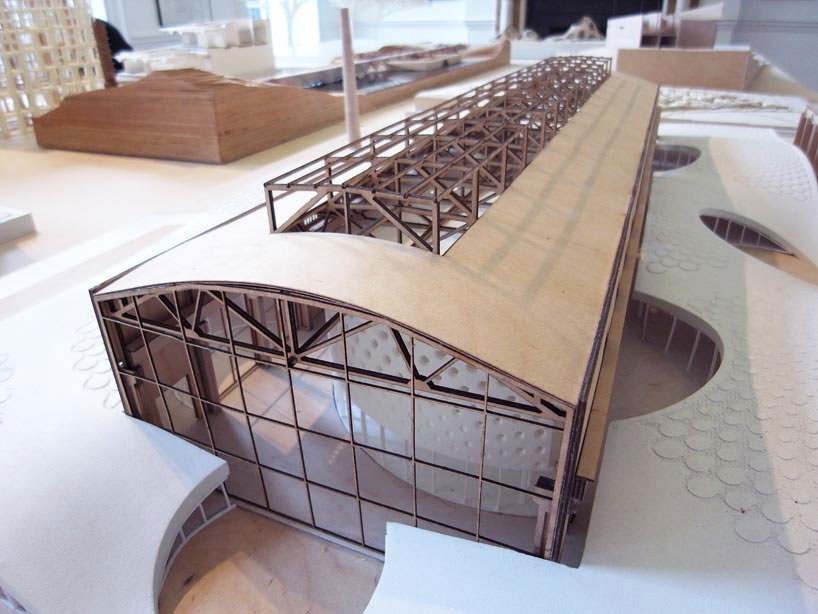 physical model image © designboom too find out more about the project, click here
physical model image © designboom too find out more about the project, click here
I assume you notice how women dress. do you have any preferences? k: (laughs) as designers, you always look for things like that. c: what I don’t like is when someone is clad head-to-toe with designer brands and in which one is known because of the designer brand. the clothes overtake the personality. for me, that’s really off-putting.
what kind of clothes do you avoid wearing? k: well the nice part about living in india is that the weather is usually nice; the majority of what you wear is very light and casual. so nothing overbearing or stuffy — just casual.
when you were a child, did you always want to be a designer or an architect? c: when you are a kid, there’s a lot of things you want to be. k: that’s right. c: they are usually not feasible, like spiderman. k: (laughs) c: but I think I always loved art and drew a lot; sketched and painted a lot even when I was very young. I think designing came very naturally. k: same for me. I was actually unsure about it but I am glad I chose architecture.
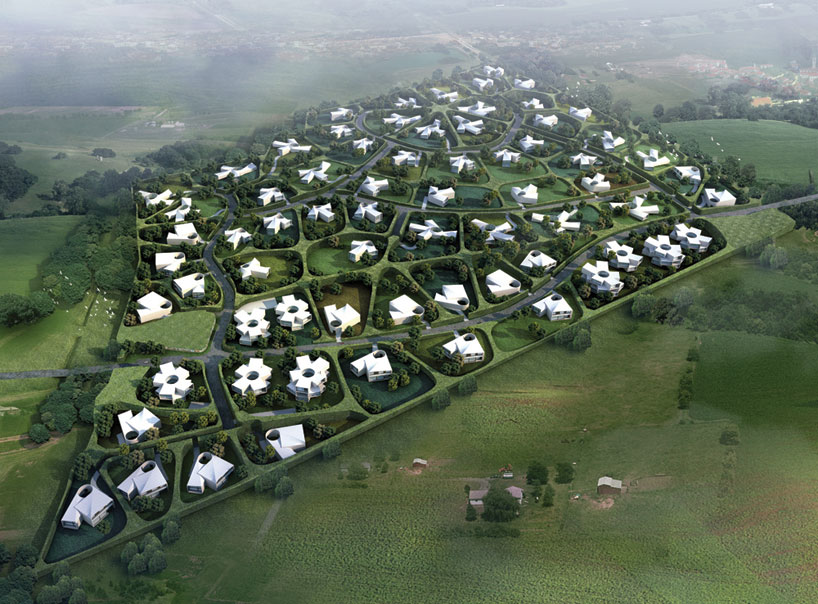 rendered view of the ‘bohacky residential masterplan’ by serie architects in slovakia, bratislava (construction to begin in 2011) image courtesy serie architects
rendered view of the ‘bohacky residential masterplan’ by serie architects in slovakia, bratislava (construction to begin in 2011) image courtesy serie architects
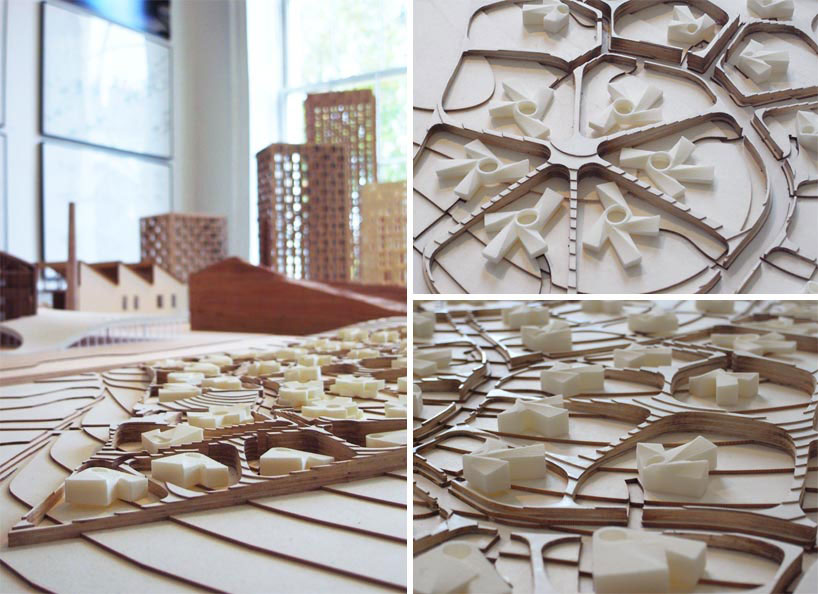 views of the model images © designboom click here for more images of the design
views of the model images © designboom click here for more images of the design
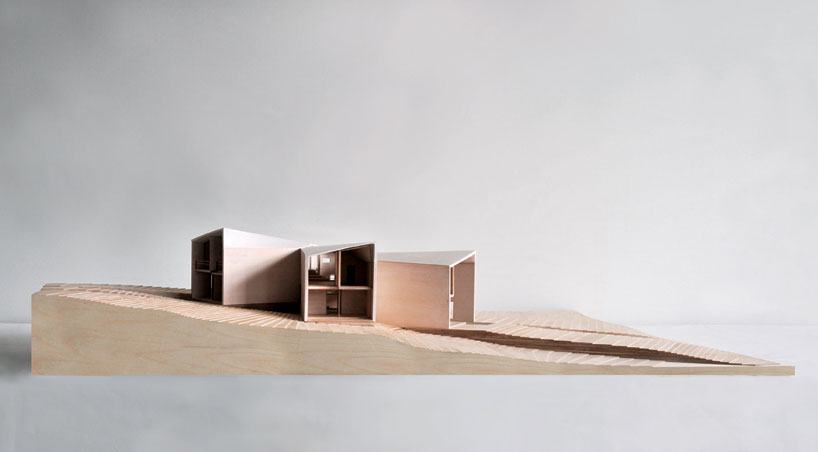 model of single residence image courtesy serie architects
model of single residence image courtesy serie architects
where do you work on your designs and projects? c: literally everywhere. of course, most of the time in the office but because we travel a lot, on flights, on trains. k: we are based in two different countries. so yes, when we meet, we always spend that time discussing, walking, talking, chatting.
do you discuss your work with other designers and architects? c: for me, quite often. mainly because the stuff that I teach and the stuff that I write relate to what we’re often working on. our work is in constant examination and discussion. k: I think in india, the problem is that you don’t have so many interesting platforms for that kind of discussion. so lecture circuits become a place where architects and designers can come together and raise more important, larger questions about architecture.
describe your style, like a good friend of yours would describe it. c: well, I think the most obvious one is that we work in series, right? k: (laughs) c: and I suppose a friend would say, ‘analysis is very important to these guys.’ analyze not only precedents that have gone on before – buildings that have gone on before – but also in its context of the city and the context of history. to this day, we invent the projects. k: absolutely. I guess the other thing that some people would say, which I think is interesting, is that the work is very intelligent. I think, in a sense, it encapsulates this idea of process and analysis; the clarity in which that is presented.
Q: describe your style, like a good friend of yours would describe it.
please describe an evolution in your work, from your first project to the present day. c: we are currently a team of around 25 people across all our offices, working on a diverse set of projects, from residential and commercial to hotels and schools. k: evolution? that, I think, is what our work is about. c: right. that the first project informs even the most recent ones; that they are developed in series. they transcend scales and use; they transcend program and also context or geographical obstacles but in a way that is also very specific in how it adapts to each and every context and situation. so I think its evolution… it’s within the same series. to us, the interest has always been the same: it’s always been about the nature of time, the evolution of time in the context of the city. k: this evolution is something that is on-going. it’s something that we are quite excited about because with every project, we are creating a new reading that is still linked back to the body of work. the consistency is in the development of three deep structures: plan vs. circles, ceiling vs. vaults, façade vs. grids. at first glance, there seems to be no clear formal consistency between the projects. but each project’s deep structure of type uses different scales for different locations.
what do you mean with ‘deep structure of type’? the meaning or the function of a building? meaning is historically constituted, and architectural forms are empty of meaning. meaning can only derive from conventions and tradition… and with respects to function, architectural typologies are usually independent of functions. architectural typologies have to be relevant to the wider context that is where architecture resides in — the city. the people which are using our buildings are intelligent and discerning. it is more important to ask what organizational potentials can a type carry. this conception is embodied in the ‘deep structure of type’.
what project has given you the most satisfaction? c: I think that every part is almost equally important. k: absolutely. c: regardless of the scale, each project has its moments of invention, moments of discovery and sometimes moments of frustration. each project has been important and are satisfying in that sense. k: yeah, it’s very hard to pick a ‘favourite’. maybe the ‘tote’ project, because of all the difficulties we had to overcome. the key concern for the branches of the tote was the accuracy of the welding. look, the branches of steel were in total over seven kilometers long! the welders had to operate within design tolerances, but through several mock-ups and trial and error processes we managed to control the deviation of the metal trusses — caused due to the heat of welding.
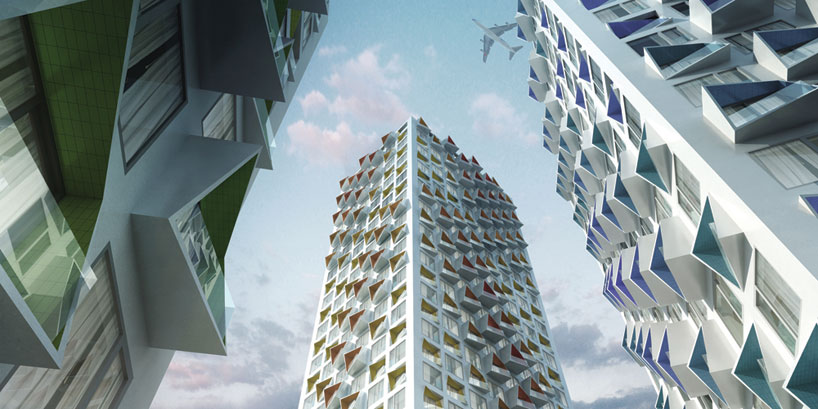 ‘ruzinov middle income housing’ in bratislava, slovakia (construction to begin march 2011) image courtesy serie architects
‘ruzinov middle income housing’ in bratislava, slovakia (construction to begin march 2011) image courtesy serie architects
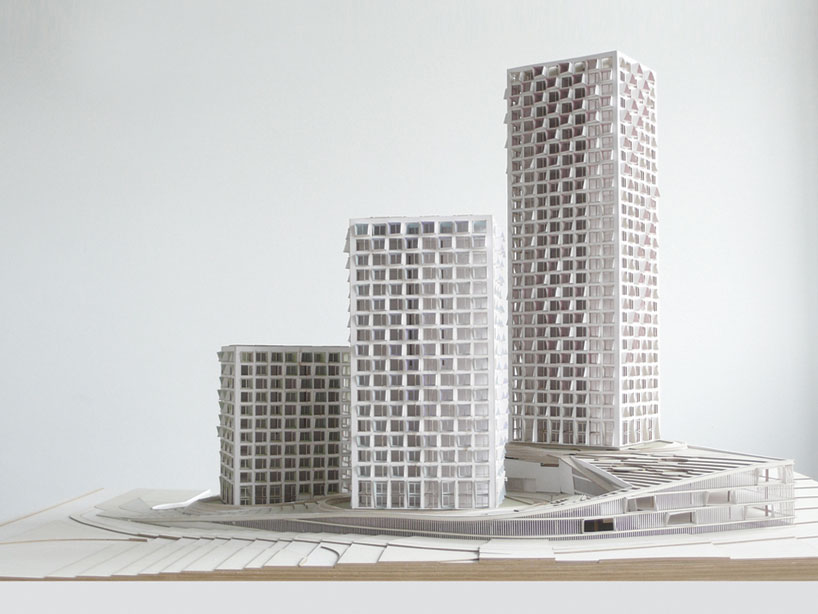 physical model image courtesy serie architects
physical model image courtesy serie architects
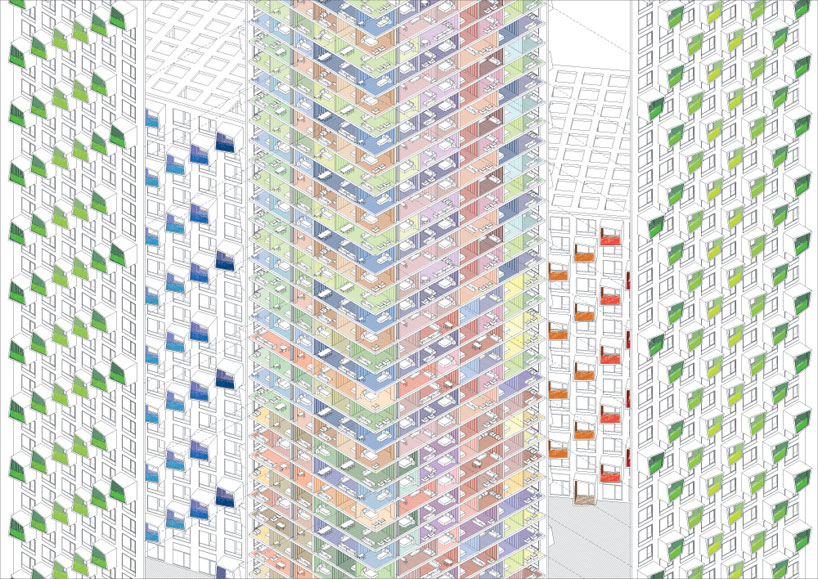 exploded axo drawing image courtesy serie architects
exploded axo drawing image courtesy serie architects
who would you like to design something for? k: a project with no time limit and no budget limit. c: (laughs) but you know, that’s not possible. k: that’s not possible. c: well, actually, the ideal client for me is someone who understands our work and who is committed to our work. that’s it. I don’t care about budget, I don’t care about size, I don’t care about location. in fact — we were just talking about it recently — this notion that good architecture can only come with a big budget… we find that quite unacceptable. k: yes, absolutely. c: to equate that architecture or good architecture has to have a big budget. I think that we need to think harder in terms of how good design can arise out of a tight budget. actually, if you see some of our projects that we are confronting now, they come with a very tight budget and, unfortunately, some of them have a very short time span… I think we are working with the realities and not seeing them as obstacles, as excuses… the ideal client is someone who is committed to the project. that’s it.
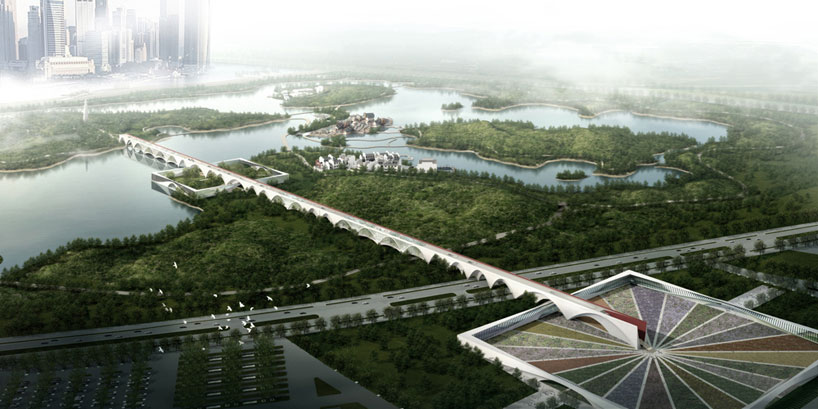 ‘xian 2011 international horticultural expo masterplan’ by serie architects in xian, china (unbuilt – 2nd prize competition win) to see more images of the masterplan, click here image courtesy serie architects
‘xian 2011 international horticultural expo masterplan’ by serie architects in xian, china (unbuilt – 2nd prize competition win) to see more images of the masterplan, click here image courtesy serie architects
are there any architects from the past that you appreciate a lot? c: oh, a lot. I would say aldo rossi, for sure. and, of course, le corbusier. k: also, le corbusier. I think at the end of the day, the level of invention and inventiveness… and the fact that most architects today, whether they will talk about it or not, have borrowed from him. in that sense, his work was so expansive, so generous.
and those still practicing? k: I think we now live in a time where it’s more about individual projects. the ‘CCTV headquarters’ by rem koolhaas along with some of his earlier work from the mid-90s. a couple of projects by steven holl are interesting. there are a bunch. c: we enjoy also sejima’s and nishizawa’s work. especially the ‘moriyama house’ and the ’21st century museum’ in kanazawa and the ‘rolex learning center’. those three projects are related in many ways.
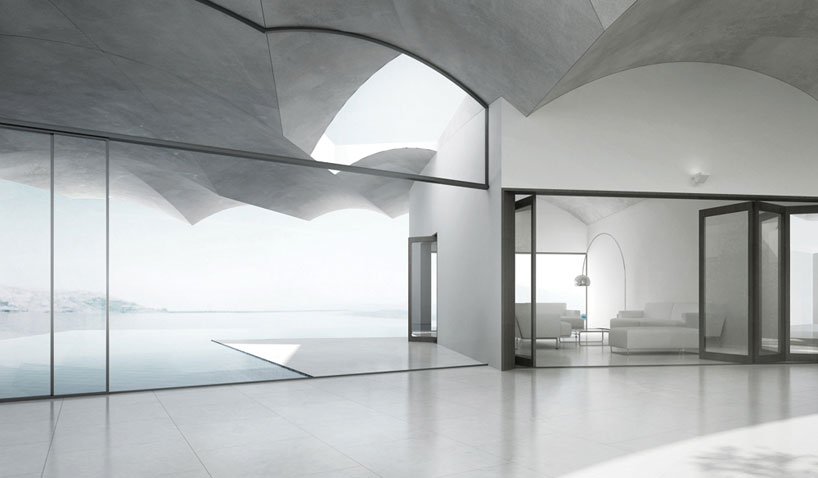 ‘meswani house’ by serie architects in pavna lake, india (2009) image courtesy serie architects
‘meswani house’ by serie architects in pavna lake, india (2009) image courtesy serie architects
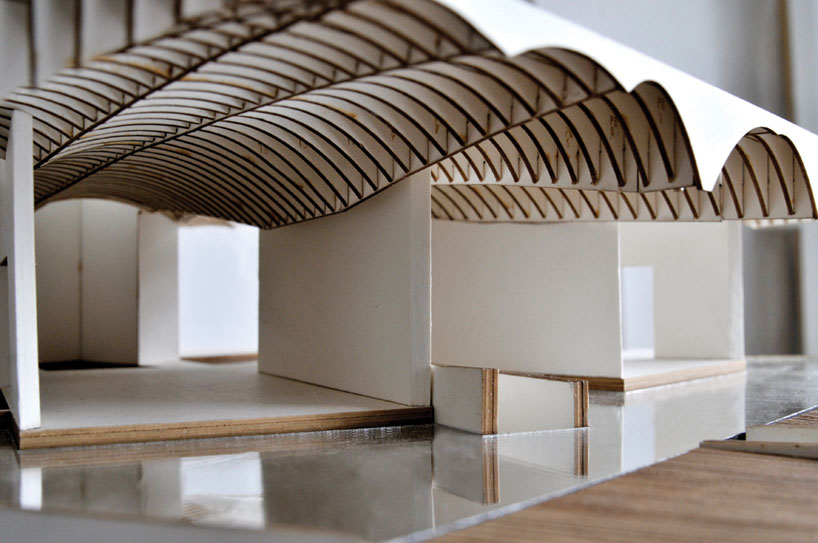 physical model image courtesy serie architects to read more on the project, click here
physical model image courtesy serie architects to read more on the project, click here
what advice would you give to the young? k: (laughs) I wish we got better advice when we were young. c: I think we are still young ourselves. k: right. c: maybe one thing that I always see with students, especially students who have just graduated, is that they are so impatient to ‘make it’ or to become famous. if I were to give an advice, it would be to just stay true to the cause of the problem; to stay true to the problem that one is looking at rather than any other thing. k: also, I think this kind of obsession with celebrity. architecture celebrity culture where they are bombarded constantly with so much imagery of architecture that in a sense, represents a loss of practicality. my advice is to just learn to be more critical, to be a little more thoughtful about how they think about the project, rather than trying to just flash impressive images.
Q: what are you afraid of regarding the future?
what are you afraid of regarding the future? c: I’m an optimistic person but I’m also, at the same time, someone who worries. the only complaint — I think it has to do with architecture again — is if architecture would further dumb down to a series of beautiful images or to a set of effects or gimmicks or exotic form. along those lines, architecture is only concerned with the question of ‘how to do’ rather than ‘why we do certain things that we do’. in that sense, I think that if architecture loses its critical faculty, it’s something that I worry about or something that I would be very disappointed by. k: speaking for us as a practice, I think we are very optimistic. I think we are excited about the future. we are young. this exhibition marks an important moment where we are able to present all our work as a body. I think our worry is more about running a practice. but in terms of the projects themselves, the anticipation to do more is very strong.
— serie architects established in 2007 by christopher lee and kapil gupta, the london-based firm has already identified itself as a dynamic and relevant player in the diverse field of architecture, urbanism and design. having been recognized on a number of international competition wins, the practice – which coordinates additional offices in mumbai, beijing and chengdu – focuses on the notion of evolution and the cumulative intelligence of precedent types which are anchored in their urban and historical context. the duo have been honoured with 2010’s young architects of the year award and have put together an exhibition of their body of work entitled, ‘working in series’ at the architectural association in london, england.
SERIE ARCHITECTS (26)
PRODUCT LIBRARY
a diverse digital database that acts as a valuable guide in gaining insight and information about a product directly from the manufacturer, and serves as a rich reference point in developing a project or scheme.
